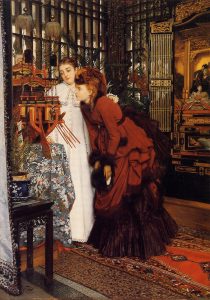My former Zen- and Calligraphy teacher often used to complain about the fact that Japanese musicians define world class in Western music, while we can’t even name three Japanese composers. Well, I could. Nevertheless, he had a valid point: the transmission of Western art, technology and culture to Japan has long been completed, while the typical Westerner knows little more than a superficial cliché about Japanese culture and arts.
I remember a particular trip on a local train from Fukushima to Aizu-Wakamatsu, when an elderly Japanese man approached me. After finding out I come from Germany, he very excitedly embarked on discussing the differences in the interpretation of a certain Beethoven concerto by various German conductors. He owned all the related records he said, and needless to say he knew much better about that subject than me (being just an amateur musician). Probably he missed his station, but I learned a lot about my countries classical music and contemporary ways of performing it. And I felt slightly embarrassed.
When I see Japanese style art made by Westerners on-line, it is usually either just a digitally modified copy&paste from some original artwork, or amateurish display on the very lowest level. My former teacher’s Enzo (Zen Circle) for example had been copied and photoshopped hundreds of times (see here and here).
Would you buy yourself a violin, take a few lessons and then try to sell your recordings on spotify? As “Authentic German Classical Music”? Probably not.
Yet there are people out there who buy themselves brush and ink, take a few lessons (or not) and copy along Japanese or Chinese characters they can hardly read or write. No problem so far, before I met my teacher I did the same. And then they go ahead and post it on-line, with a price tag attached to it.
Probably a perfect example of the Dunning-Kruger effect, such action reveals a significant lack in understanding even the basics of a foreign culture they plan to make money with.
Before I sold my first piece of calligraphy, I had more than 20 years of practice (13 with my former teacher), a sheet of paper written by him endorsing me to teach what I had learned from him, and a name he kindly passed me down (道楽庵, Doraku-An). Yet still, I felt embarrassed offering my work for money.
There is a certain standard with each established art, and nowadays it is easy even for the beginner to figure out what a masterpiece could be, and what a minimum acceptable public performance would look or sound like.
Learning a traditional Japanese or Chinese art requires decades of dedicated practice and investment of a good deal of ones’ life-time (and financial resources). In case of doubt, please read Passagère du silence by Fabienne Verdier about the ten harsh years she spent in post culture revolution China studying traditional Chinese Calligraphy. By no means this is done with just a few years of training to acquire certain technical skills.
How can we Westerners become more familiar with Japanese art? Is there a chance to plant the seeds for a deeper and wider understanding? Or will we, generation after generation, just scratch the surface of being fascinated by what we experience as this strange culture? What progress can we observe so far during the past 150 years, after the first wave of Japonisme hit Europe? It is a shame!

